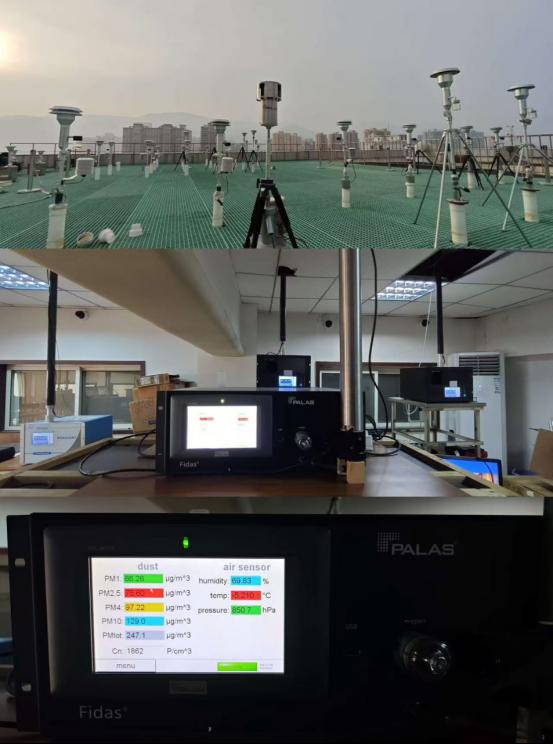Original article source: Gansu Provincial Department of Ecology and Environment
Air pollution is one of the most challenging environmental problems in the world. President Xi Jinping pointed out that the defence of the blue sky is the top priority in the battle against pollution. PM2.5 is an atmospheric pollutant of high concern to ecological environmental protection, health and health sectors because of its small particle size and complex components, which is extremely harmful to the human body. At present, China’s PM2.5 monitoring method for the β-ray method and oscillating balance method, with the development of monitoring technology, high-precision light scattering method of particulate matter (PM10 and PM2.5) automatic monitoring instruments because of its high temporal resolution of the data in seconds, low energy consumption, low maintenance, low consumables, a device can be obtained in a variety of particle size particulate matter mass concentration and number of concentrations of the data, such as the technical advantages. In recent years in the United States, Europe, the proportion of applications in the monitoring network has gradually increased, and domestic universities and ecological and environmental monitoring departments have also begun to high-precision light scattering method of particulate matter test monitoring, but in the northern arid, sand and dust natural sources of greater influence of the region has not yet been applied to the precedent.
Lanzhou City is located in the middle of Gansu Province, and is susceptible to the transmission of sand and dust from the north-west in winter and spring, the river valley topography and the frequent occurrence of static and stable weather in spring and winter, the impact of sand and dust retention and reflux is very significant, and Lanzhou City, as the political, economic and cultural centre of the province, the situation of composite atmospheric pollution, which is dominated by secondary particles, is very serious. In order to further carry out the light scattering method equipment in the dust weather affected by the applicability of the monitoring of the region, accuracy testing, Gansu Provincial Environmental Monitoring Centre and the German Palas domestic authorised partner WillBetter to carry out a number of technical exchanges, the two sides on the high-precision light scattering instrument in the field of ambient air quality monitoring to reach a technical cooperation intention, give full play to both sides of the technological advantages of the high-precision light scattering method for the application of the instrument, fast particulate matter measurement, fast particle measurement, and the two sides to achieve a high level of accuracy. The two parties reached a technical cooperation intention on the application of high-precision light scattering instruments in the field of ambient air quality monitoring, giving full play to the technical advantages of the two parties to accumulate experimental data for the application of high-precision light scattering instruments, rapid measurement of particulate matter, and then carry out pollution traceability to support environmental management.
As the technical centre and quality control centre of the province’s automatic ambient air monitoring, Gansu Environmental Monitoring Centre is equipped with one-millionth high-precision filter membrane automatic weighing system, a complete performance comparison site for automatic particulate matter monitoring instruments, and a wealth of experience in long-term manual monitoring of particulate matter, which lays a solid technical foundation for carrying out the applicability test of high-precision light scattering method automatic particulate matter monitoring instruments.
On 13th December, the Palas® Fidas 200 continuous automatic ambient air particulate matter monitoring system provided by Palas of Germany was installed and commissioned at the particulate matter comparison site of the provincial station, and it is planned to carry out a one-year test from January 2025 onwards.
The Palas® Fidas 200 continuous automatic ambient air particulate matter monitoring system was installed at the comparison site on the 17th floor of the provincial station, where several β-ray method instruments were also installed to carry out PM2.5 manual sampling on a long-term operational basis, and to obtain particulate matter data in different seasons and under different meteorological conditions through data accumulation and analysis over a long period of time, laying a solid foundation for the study on the application of the high-precision light scattering method instruments to the cities of northern China by scientifically and accurately evaluating the accuracy of the method. This will lay a solid data foundation for scientific and accurate assessment of the applicability of high-precision light scattering method in northern cities in China.
Palas® organizes a series of events on various topics to share professional knowledge of aerosol measurement technology. Palas® technical experts and industry scholars from all over the world will give you detailed online explanations. Welcome to register to attend and learn more about the conference as soon as possible!
| Date | Time | Topic | |
| 2025/2/26-27 | 9:30-17:00
9:00-17:30 |
Air Quality Forum 2025 – Brussels, Belgium | Offline-Forum |

